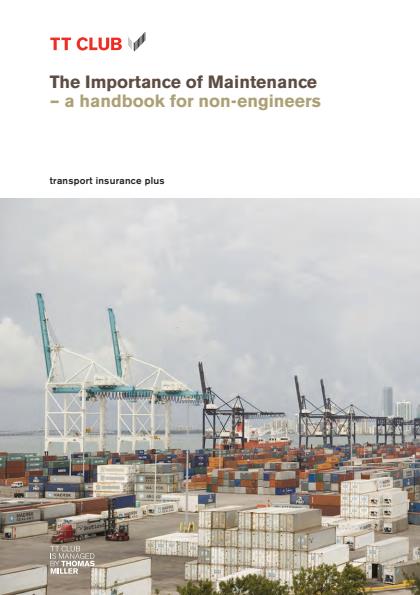Risk management handbook
The importance of maintenance: a handbook for non-engineers
Asset management is of great importance to any business. Maintenance - the maintaining and monitoring of assets - is an integral and important part of asset management. This handbook addresses issues relating to the maintenance of infrastructure and equipment in a port facility.
The purpose of maintenance is to maximise an asset’s useful lifetime and minimise its cost. Decisions are made regularly about how to sustain assets – from servicing intervals and frequency to a responsibility hierarchy. While software tools can aid in the administration of a planned, efficient, cost-based maintenance schedule, the fundamental issue is one of management attitude. If an asset is maintained more often than necessary, valuable time and resources are wasted. Maintenance performed too infrequently will also lead to a loss, resulting in unplanned down-time. Additionally, the cost of unexpected failure and repair can be up to six times that of planned, preventive maintenance. Costs saved by delaying routine servicing are short-term savings that may, eventually, incur financial loss.
Maintenance should only be carried out within the strictures of a documented plan, when all the required resources are readily available and at a time that will cause least disruption to customers. It may be performed by in-house employees or out-sourced to contractors. This decision is made based upon the degree of expertise and equipment which is required as well as the funds and time available.
It is important that there is a well-organised asset management structure. Front-line supervision, engineering/maintenance management, engineering support, training, participative teamwork, and planning and maintenance data management are all key aspects.
Key Performance Indicators (KPIs) which monitor how a site’s assets are being maintained include the safety of personnel and the environment, the performance of equipment and the cost of engineering. Retirement, the final phase of an asset’s life cycle, can be the result of a need for newer models, changes to operational requirements, high maintenance costs or the risk of total failure.
This handbook gives readers a general understanding of asset management and gives some insight about how to handle it efficiently and economically while, at the same time, maintaining customer service levels.
Documents
Importance of Maintenance - a handbook for non-engineers (2.23 MB) 16/01/2012
- Author
- Peregrine Storrs-Fox
- Date
- 01/01/2012






